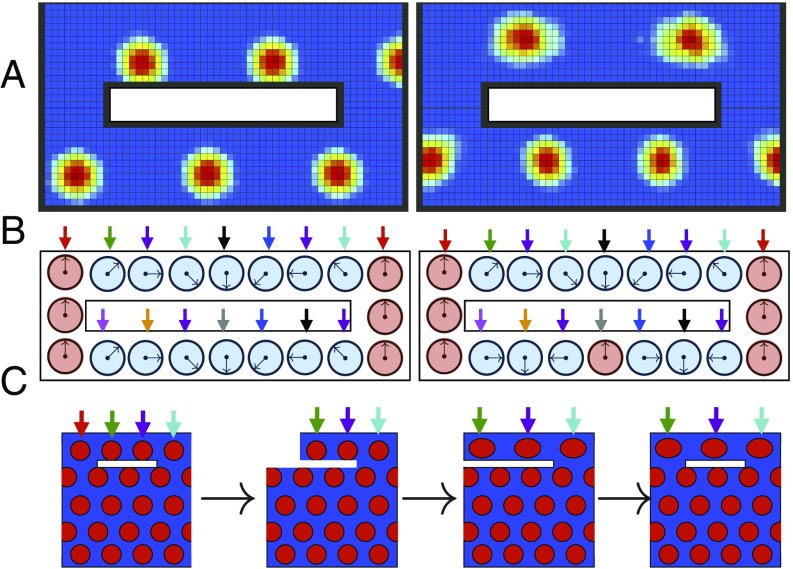Fig. 9.
(A) Two steady-state grid cell patterns emerging from the same cue-rich environment. In the first firing pattern, the combination of landmark pinning and path integration yields a phase advance of four firing fields in traveling from west to east along either corridor. The second pattern has a topological defect: Traveling from the west to the east through the north corridor yields a phase increase of firing fields; traveling east to west through the south corridor yields a phase decrease of firing fields. This second pattern is stable nonetheless. (B) Schematic of 1D underlying attractor state as a function of space. The two patterns in A correspond to two different landmark pinning-phase patterns learned by the many landmarks. Both landmark pinning patterns are stable under Eqs. 13 and 15. In the first pattern, the combination of landmark pinning and path integration yields the same phase advance in both the north and south corridors. The second pattern has a topological defect: The phase advance in the north corridor is one full rotation less than the phase advance through the south corridor. This is possible because many landmark cues (colored arrows) can yield many landmark cells with multiple stable synaptic configurations or pinning phases under Eqs. 13 and 15. (C) Schematic of proposed “deformation schedule” that could yield a topological defect in grid cell firing patterns. By separating/truncating the northern corridor, stretching it (along with spatial cues, denoted by colored arrows), and then reconnecting it, it may be possible to introduce one of these defects. Even though the initial geometry is identical to the final geometry, the deformation schedule has led to a firing pattern which is three fields wide in the north and four fields wide in the south.

